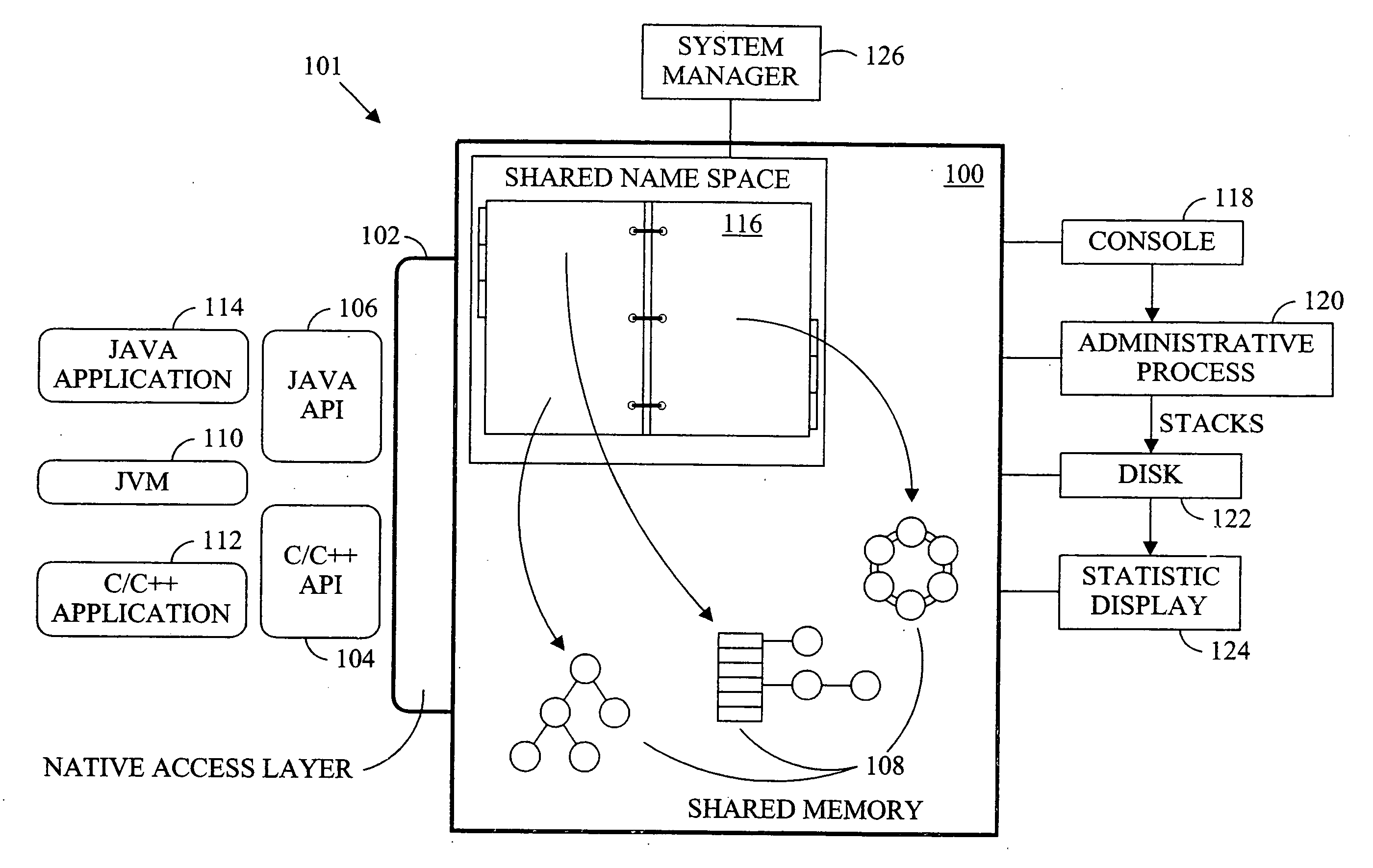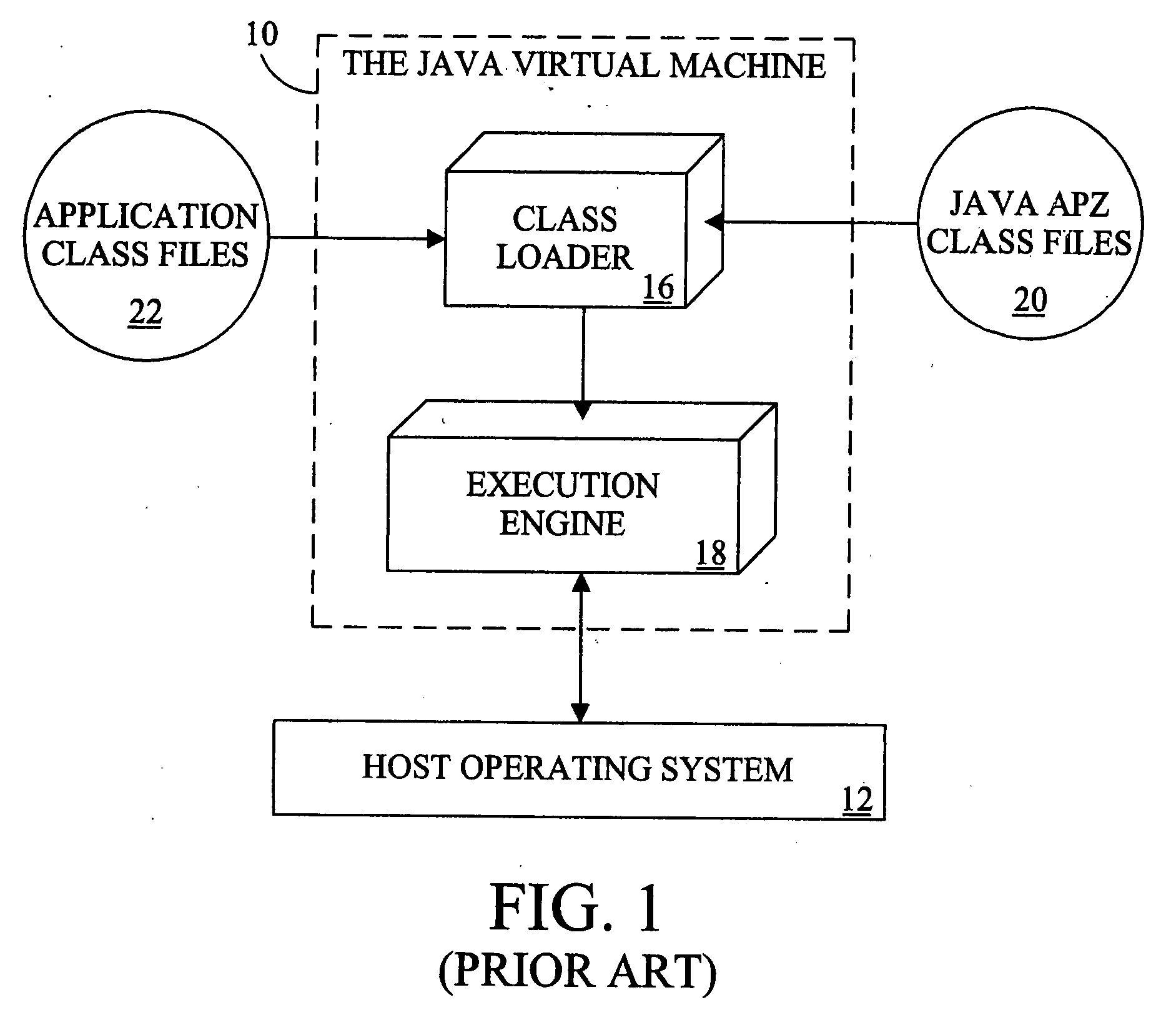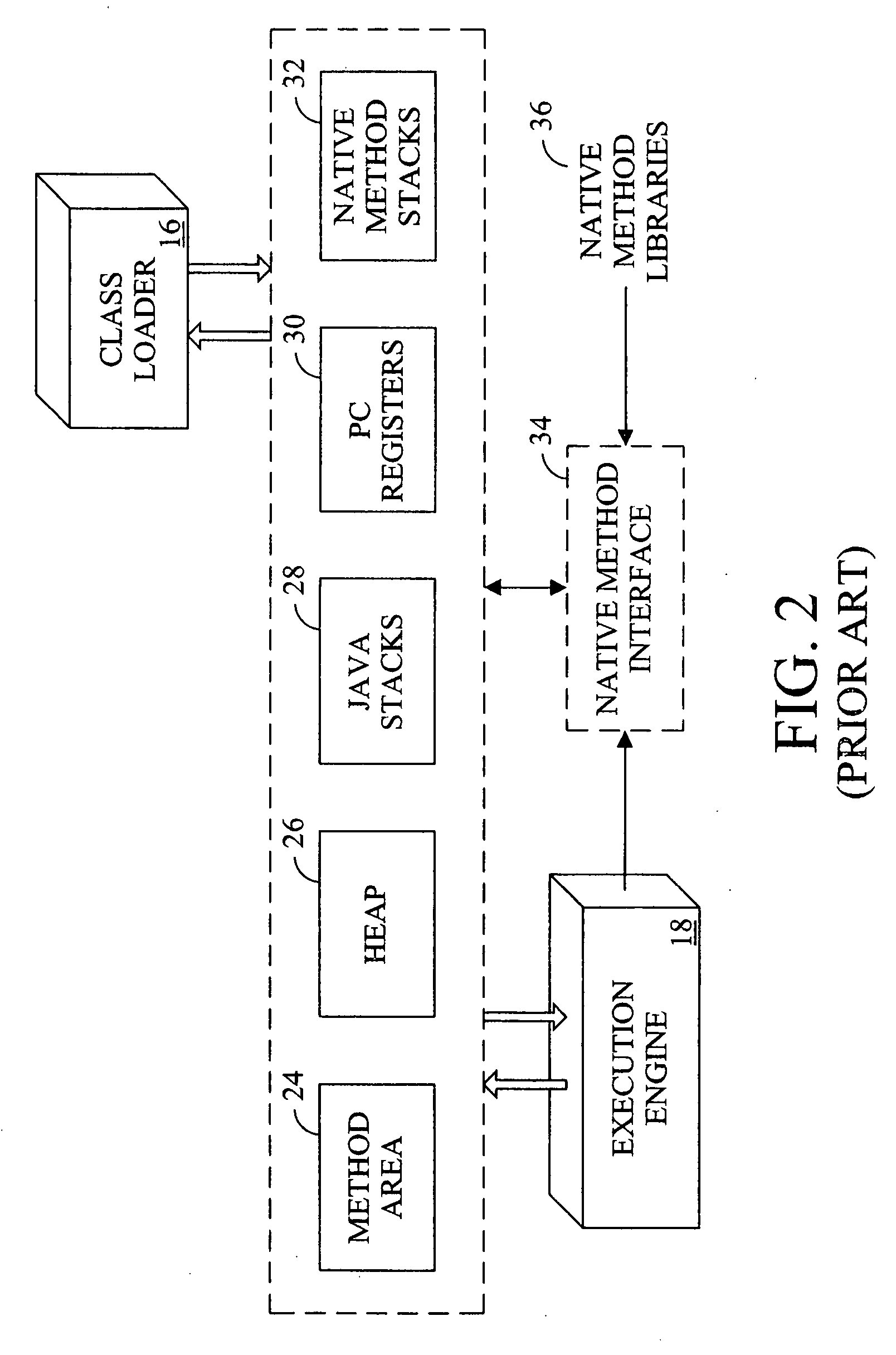Object synchronization in shared object space
a shared object and object technology, applied in the field of shared object synchronization system, can solve the problems of large storage space and processor cycles of computer programs operating in binary code, relatively inefficient binary code, and inefficient binary cod
- Summary
- Abstract
- Description
- Claims
- Application Information
AI Technical Summary
Benefits of technology
Problems solved by technology
Method used
Image
Examples
Embodiment Construction
[0036]FIGS. 1-4B show a simplified architectural schematic of an existing Java VM 10, although it should be understood that other types of VMs besides Java may also have the features shown in FIGS. 1-4B. Referring specifically to FIG. 1, when a Java application is initiated on a host computer with a host operating system 12, the Java virtual machine (VM) 10 loads the application which may include a class loader 16 and an execution engine 18. Although FIG. 1 indicates a single class loader, in actuality, a Java VM may include multiple class loaders. Thus the class loader 16 may be considered a subsystem that may involve many class loaders. The Java VM 10 has a flexible class loader architecture that enables a Java application to load classes in custom ways.
[0037] Specifically, the class loader 16 may comprise a system class loader and one or more user-defined class loaders. The system class loader is a part of the Java VM implementation and loads classes, including the Java applicat...
PUM
 Login to View More
Login to View More Abstract
Description
Claims
Application Information
 Login to View More
Login to View More - R&D
- Intellectual Property
- Life Sciences
- Materials
- Tech Scout
- Unparalleled Data Quality
- Higher Quality Content
- 60% Fewer Hallucinations
Browse by: Latest US Patents, China's latest patents, Technical Efficacy Thesaurus, Application Domain, Technology Topic, Popular Technical Reports.
© 2025 PatSnap. All rights reserved.Legal|Privacy policy|Modern Slavery Act Transparency Statement|Sitemap|About US| Contact US: help@patsnap.com



